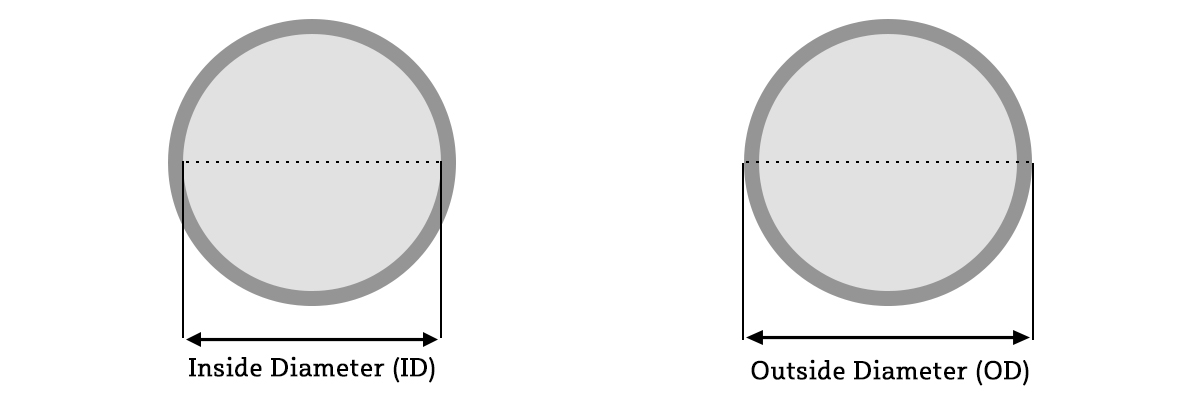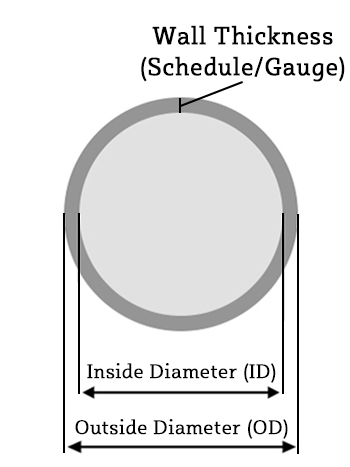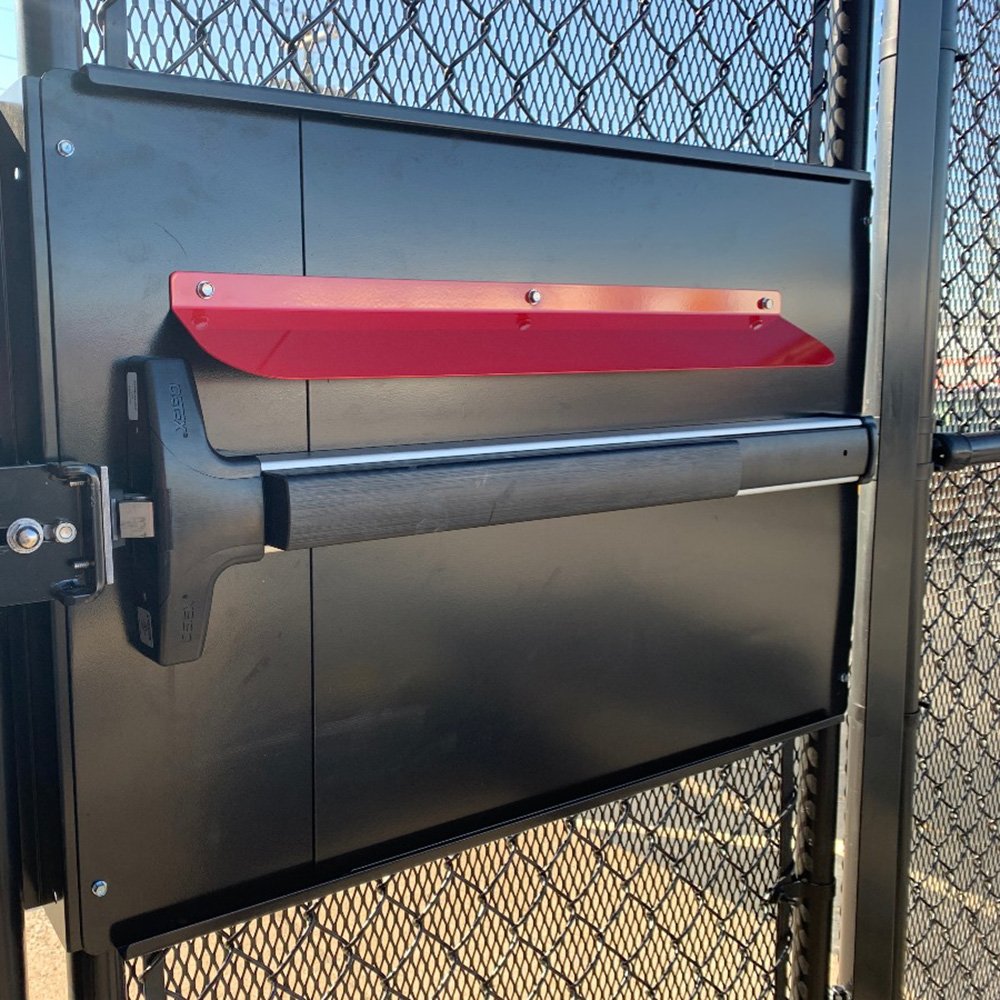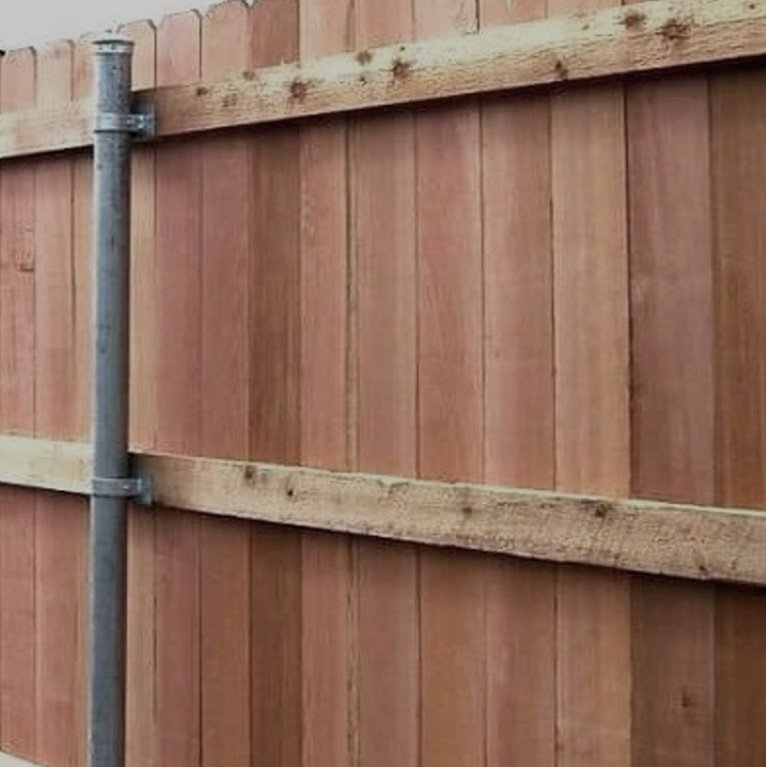How To Measure Your Post
When buying a hinge, clamp, post cap, brace band, sleeve or tension band, it's important to understand how to properly measure a post or rail so the item you buy fits properly. While the listed dimensions for a post cap may be 2" the post that will have an actual diameter of 1 7/8". Measuring a round or square post to find its diameter depends on whether the product fits the post internally, like these post plugs, or externally, like these post caps. Below, you can read more about inside diameter versus outside diameter and how the nominal - or listed - diameter for a product can differ from the actual diameter.
Inside Diameter Vs. Outside Diameter

A post, which has either a square or circular shape, has an inside diameter and an outside diameter. To find the outside diameter, measure from the outside edge of the post's wall directly across to the inside edge on the opposite side. The outside diameter is relevant for external-fitting objects like external post caps. The inside diameter pertains to internal-fitting objects, such as post plugs. Finding the inside diameter means measuring from the inside of a post's wall, directly across to the inside of the wall opposite your first measuring point. Internal-fitting items should fit snugly inside the post, forming a tight connection that keeps moisture and pests out. The difference between the inside and outside diameter for a post is the wall thickness of a post or rail. Schedule 40 is the most common pipe schedule, which describes the thickness of a pipe. As the schedule number increases, so does the thickness of the pipe. Beside is a diagram to illustrate the role that wall thicknesses or gauges play in the diameter of a pipe or tube measurement.

The Difference Between Post And Tube
Although the terms post and tube can sometimes be used interchangeably, there are differences between the two, especially when it comes to how diameter and wall thickness are measured. Tube wall thickness is measured in gauge; the lower the gauge, the thicker the wall. For example, a 10-gauge wall is thicker than a 16-gauge wall. The gauge measurement is consistent across various tube sizes. Pipe wall thickness is measured by pipe schedules. Popular pipe schedules are Schedule 10, 40, and 80. The measurement of a pipe's schedule does not indicate the pipe's diameter. Usually, the fence industry will use the actual O.D. in fraction form as the primary measurement.
Pipe Schedules (Wall Thickness):
| Fence Nominal Pipe Size (OD) | Actual OD Pipe Size | Actual O.D. (Inches) | SS20 Wall Thickness | SS40 Wall Thickness | Schedule 40 |
|---|---|---|---|---|---|
| 1 3/8" | 1 3/8" | 1.315" | 0.085" | 0.104" | 0.179" |
| 1 5/8" | 1 5/8" | 1.660" | 0.085" | 0.110" | 0.191" |
| 2" | 1 7/8" | 1.900" | 0.090" | 0.120" | 0.200" |
| 2 1/2" | 2 3/8" | 2.375" | 0.095" | 0.130" | 0.218" |
| 3" | 2 7/8" | 2.875" | 0.110" | 0.160" | 0.276" |
| 3 1/2" | 3 1/2" | 3.500" | 0.110" | 0.160" | 0.300" |
| 4" | 4" | 4.000" | 0.160" | 0.160" | 0.318" |
| 4 1/2" | 4 1/2" | 4.500" | - | - | - |
| 5" | 5 9/16" | 5.563" | - | - | - |
| 6" | 6 5/8" | 5.625" | - | - | 0.432" |
| 8" | 8 5/8" | 8.625" | - | - | 0.500" |
Nominal Diameter Vs. Actual Diameter
It can be confusing when a post cap, for example, is listed as 2", but with a 1 7/8" Actual OD (Outside Diameter). It's important to understand the differences between nominal and actual sizes of posts. In the building industry, nominal dimensions are the terms that are used most often, such as a 2" post cap, while actual dimensions are the true measurements of a post, which in this example would be 1 7/8". If you are buying that 2" post cap, you would need to measure and make sure your post has an outside diameter of 1 7/8". What can make the process more confusing is that for some post diameters, such as 1 5/8" and 4", the actual and nominal diameters are the same. Below is a helpful chart showing each of the post (and rail) dimensions we offer so you can compare their nominal and actual diameters.
| Nominal Diameter | Actual Diameter |
|---|---|
| 1 3/8" | 1 3/8" |
| 1 5/8" | 1 5/8" |
| 2" | 1 7/8" |
| 2 1/2" | 2 3/8" |
| 3" | 2 7/8" |
| 3 1/2" | 3 1/2" |
| 4" | 4" |
| 4 1/2" | 4 1/2" |
| 6" | 6 5/8" |
| 8" | 8 5/8" |




